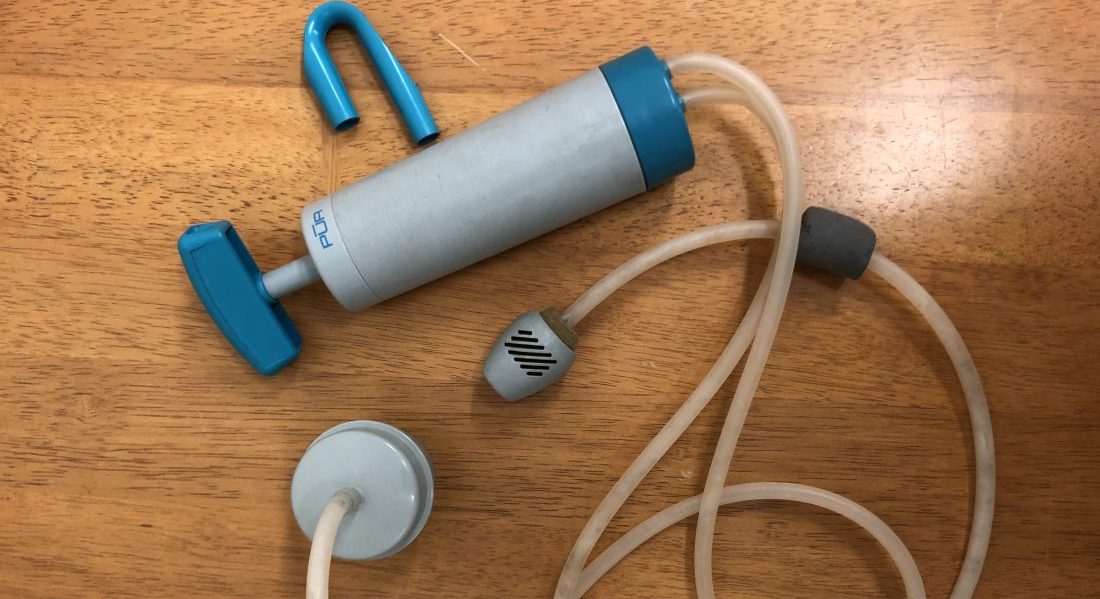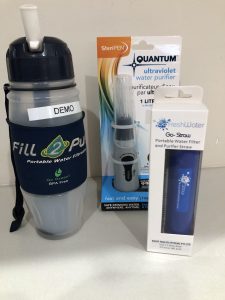
One of your main concerns when travelling should be access to safe drinking water. After all, diarrhoea is the most common illness experienced by travellers in developing countries. There are lots of different options for making water safe to drink, some more reliable and easier to use than others.
Generally speaking there are 3 kinds of bugs that can make you sick – viruses which are tiny and can slip through filters, bacteria which are bigger and usually susceptible to chemical treatments like iodine and chlorine and ultraviolet light; and parasites which are bigger again, often resistant to chemical treatment but can be filtered. And then there are concerns about chemicals and heavy metals ……
Most people rely on bottled water when travelling. This is usually safe, especially if you break the seal yourself (to ensure no one has refilled the bottle with tap water), however this can add up to a lot of plastic waste. Boiling is generally a good way of killing bugs, but requires fuel, and this is often a scarce resource and not always a practical technique.
The best options for making your own water safe generally combine more than one purification method. A little over 20 years ago I spent a year travelling in Asia, and had a really good device – it was a pump attached to a cartridge out of which came 2 silicon tubes. One had an acorn on the end that I would drop in a water source, the other had an attachment that screwed onto the top of a one litre Nalgene bottle. When I pumped away, water would be drawn through a filter impregnated with iodine and then through a carbon filter and into my drinking bottle. It was a cutting edge device at the time but also a bit tedious and bulky. Back then in the mid-90s it cost around $200, and came in a bag that I carried everywhere in my pack.
Now there are much better alternatives which are easier to use and cheaper. Probably the best is the Fill2Pure bottle. This is a soft plastic 800ml bottle with a compact 3 in 1 filter built into it. Once you fill the bottle with water from a tap or stream (anywhere!) the water passes over iodine beads, through a mesh filter and then another carbon filter. No waiting, no pumping, no moving parts. It’s good for 400 to 500 litres until the filter eventually clogs up, and costs only a little over $40. I wish I’d had one back then!
An alternative is the Go Fresh Straw which uses microfiltration to sift organisms out of the water. Flow rates are a bit slower and it doesn’t remove chemicals that the Fill2Pure bottle does, but it’s very compact and is ideal as a backup option when travelling as it takes up very little space and costs only $29.95.
Another option is the Steripen, a battery powered device which makes water safe with ultra violet light. Water is safe to drink for up to 24 hours after being treated. This device retails at $82.70 which is a bit more expensive than its alternatives but if someone hands you something to drink and you are concerned about it being safe from bugs, the Steripen is a quick and easy way to purify its contents.
So, whilst bottled water is safe and readily available when travelling, there are now some very cost effective alternatives that will help deal with the mounting issue of plastic waste in the developing world. And they’re pretty affordable too! 
Dr Aidan Perse